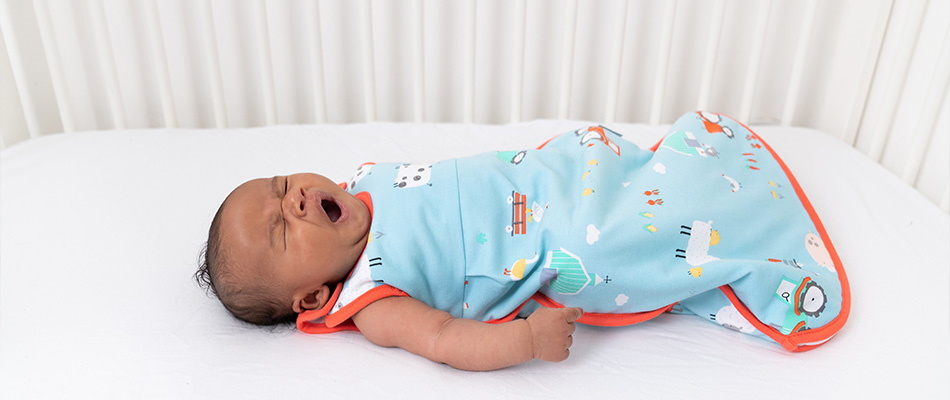Swaddling has long been a traditional method to help newborns sleep peacefully. This age-old practice involves wrapping babies snugly in a blanket, mimicking the warmth and security of the womb. Swaddling can have several advantages, especially during the early weeks and months of a baby's life.
Benefits of Swaddling
Promotes Better Sleep: Swaddling helps to suppress the startle reflex, which can wake babies from their sleep. By keeping their arms tight against their bodies, swaddling reduces these sudden movements and helps babies sleep more soundly.
Provides a Sense of Security: The snugness of a swaddle can provide a comforting feeling for newborns, similar to being held. This can help soothe fussy babies and make them feel more secure.
Helps Regulate Temperature: Swaddling can help keep babies warm without the need for loose blankets, which can pose a risk of suffocation. A properly swaddled baby stays warm and cozy.
Reduces Anxiety: The gentle pressure of swaddling can have a calming effect, helping to reduce crying and fussiness. It can also help ease the transition from the womb to the outside world.
Transitioning from Swaddling to Baby Sleeping Bags
While swaddling has its benefits, it's not a long-term solution. As babies grow and become more active, they need more freedom of movement. This is where baby sleeping bags come into play as an excellent alternative.
Baby sleeping bags are a safe, comfortable, and highly recommended alternative to swaddling. They offer numerous benefits, including reducing the risk of overheating, promoting healthy hip development, and providing a secure sleeping environment. By choosing the right size and incorporating it into your baby’s routine from birth, you can ensure a smooth transition and a restful night’s sleep for your little one.
Why Baby Sleeping Bags Are a Great Alternative
Baby sleeping bags, also known as wearable blankets, offer a safe and comfortable option for your baby's sleep. They combine the benefits of swaddling with added advantages that support your baby's development and safety.
Freedom of Movement
Baby sleeping bags are designed to provide ample room for leg movement, ensuring that your baby’s legs are not restricted or forced into a straight position. This freedom allows for natural and healthy hip development, which is crucial during the early stages of growth.
Keeping Babies Calm and Safe
One of the primary benefits of baby sleeping bags is their ability to keep babies calm and safe. The snug yet comfortable design helps in creating a secure environment that can mimic the feeling of being swaddled. This can be particularly useful in helping babies to settle and sleep more soundly.
Reducing the Risk of Overheating
Overheating is a significant concern for parents, as it is associated with an increased risk of Sudden Infant Death Syndrome (SIDS). Baby sleeping bags are designed to limit this risk by allowing better air circulation and maintaining a consistent temperature.
Recommendations from Midwives
Midwives often recommend the use of baby sleeping bags from birth. Starting your newborn in a sleeping bag can eliminate the need for a transition period later on, which can be stressful for both babies and parents. Early introduction helps establish a comforting routine, making it easier for your baby to move to larger sleeping bags as they grow.
Sizes for Newborns
At Slumbersac, there are two sizes of baby sleeping bags specifically designed for newborns:
56 cm: Suitable for small babies with a birth weight below 4 kg.
70 cm: Ideal for babies with a birth weight of at least 70 cm.
When selecting a baby sleeping bag, it is crucial to ensure that your baby’s head cannot pass through the neck opening to prevent any risk of suffocation.
Promoting Healthy Development
Using baby sleeping bags correctly can significantly reduce the risk of overheating and cot death. Additionally, they support the healthy development of your baby’s hips by allowing natural leg movement.
Tips for Using Baby Sleeping Bags
Choose the Right Size: Ensure the sleeping bag fits well around the neck and shoulders but allows plenty of room for leg movement.
Check the Temperature: Dress your baby appropriately for the room temperature to avoid overheating.
Routine Matters: Incorporate the sleeping bag into your baby’s bedtime routine to provide a sense of security and consistency





